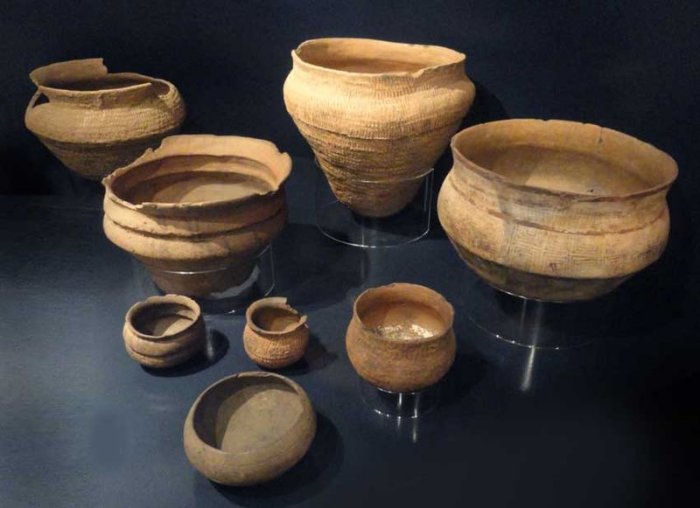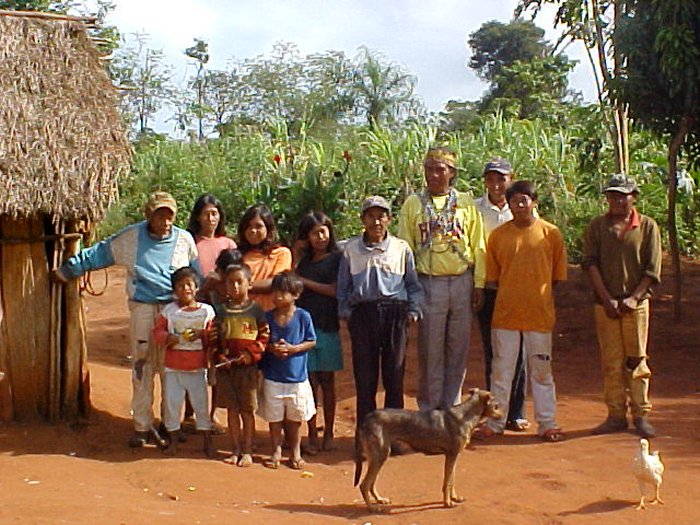Conny Waters – AncientPages.com -University of Tübingen computational linguist investigates kinships of the Tupí-Guaraní language family using methods from molecular biology.
A new study indicates that one of the largest of the indigenous language families in Latin America originated in the sixth century BCE in the basin of the Rio Tapajós and Rio Xingu, near the present-day city of Santarém in the Brazilian state of Pará.
![The Tupí-Guaraní languages used in this study (in green) and the Tupían (non-TG) Awetí (in blue), and Mawé (in red), along with the distribution of the TG archaeological record (black dots). Prepared by the authors with QGIS 3 [29], based on based on public domain data and raster images from “Natural Earth”, including data from [30–32] and an unpublished database by Corrêa and Noelli. Credit: PLOS ONE (2023). DOI: 10.1371/journal.pone.0272226](https://top.szone.live/wp-content/uploads/2024/02/indigenouslanguages14.jpg)
The Tupí-Guaraní languages used in this study (in green) and the Tupían (non-TG) Awetí (in blue), and Mawé (in red), along with the distribution of the TG archaeological record (black dots). Prepared by the authors with QGIS 3 [29], based on based on public domain data and raster images from “Natural Earth”, including data from [30–32] and an unpublished database by Corrêa and Noelli. Credit: PLOS ONE (2023). DOI: 10.1371/journal.pone.0272226
There are around fifty languages in the Tupí-Guaraní language family, which gave us words like “jaguar” and “piranha.”
Now, Dr. Fabrício Ferraz Gerardi from the University of Tübingen’s Insтιтute of Linguistics and a team of international researchers have used methods developed in the field of molecular biology to compare and investigate the Tupí-Guaraní languages.
This has shed light on how the languages are related to each other, as well as on their geographical and chronological evolution.
Little is known about the history of the Tupí-Guaraní language family. It includes about 40 languages still spoken today and at least another nine that have died out. The number of speakers per language ranges from less than one hundred, as in Amondawa and Juma, to six million, as in Paraguayan Guaraní. Only a few of the Tupí-Guaraní languages have been written down.

Ceramics of the Guarani People. Image credit; tetraktys – CC BY 3.0
“It is mainly the extinct languages that we know from phonetic transcriptions noted down by researchers in past centuries,” Fabrício Gerardi says.
Comparison of basic vocabulary
For the relationship analysis of the various Tupí-Guaraní languages, the research team used comparative lists of basic vocabulary. They asked, for example: Are the words for “leg,” “sing,” or “bat” the same or similar in the languages studied? Or do they not share a common root?
“In molecular biological relationship analysis, for example of different animal or plant species, the respective gene sequences are used. They indicate which areas are the same or similar. The general random rate of gene changes – mutations – can also be used to estimate how long ago two related species split off from a common ancestor,” Gerardi explains.
The mutations in the genes of biological species correspond to phonetic shifts or subsтιтutions in related languages. Thus, in Tupinambá, one of the Tupí-Guaraní languages, the tapir is called “tapi?ir”; in Awetí, a language that split off from these languages, it is called “tapi?it.”

A Guarani Family From Mato Grosso do Sul, Brasil, 2004- Image credit: Robertobra – CC BY-SA 3.0
Large-scale analyses of the vocabulary and grammatical structures of the Tupí-Guaraní languages using algorithms from molecular biology can be used to create a family tree. “We wanted to know what the tree looked like, how strongly related individual languages were to each other, how old each language was, and when it split into new languages,” Gerardi says.
Timeframe calibrated via archeological finds
The distribution of the Tupí-Guaraní language family extends more than 4000 kilometers in both width and breadth. “In some cases, we have archaeological finds from the same area that we try to ᴀssign to the individual languages. For example, there are certain words in the languages for describing special properties of the ceramics discovered there,” says Gerardi.
“This allows us to establish a temporal and spatial relationship between the language and the archaeological finds. The ceramics could be dated using the radiocarbon method – so we indirectly have a temporal calibration of language development,” he adds. Along the way, Gerardi and the research team were able to pinpoint the probable place of origin of the Tupí-Guaraní language family to the Tapajós-Xingu basin some 2,550 years ago.
“However, to better corroborate our findings, the archaeological and linguistic evidence would need to be further explored,” he says.
Publication:
Fabrício Ferraz Gerardi, Tiago Tresoldi, Carolina Coelho Aragon, Stanislav Reichert, Jonas Gregorio de Souza, Francisco Silva Noelli: Lexical Phylogenetics of the Tupí-Guaraní Family: Language, Archaeology, and the Problem of Chronology. PLOS ONE, https://doi.org/10.1371/journal.pone.0272226
Additional images: University of Tübingen
Written by Conny Waters – AncientPages.com Staff Writer





